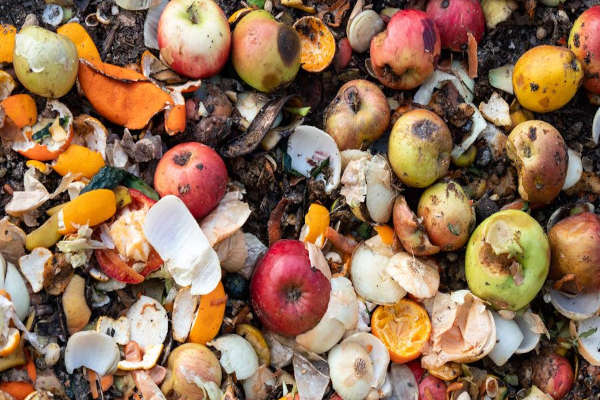In this modern age, we waste our food unwittingly. Each year, roughly ⅓ of the global food supply is disposed of; significantly disrupting the state of our planet economically and environmentally, and leaving our planet practically begging for relief. This article will enlighten readers on the implications of food waste on our planet, the different perspectives that stem from this topic, and the potential solutions to navigating this problem.
We toss our food away unhesitatingly and our “out of sight, out of mind” attitudes cause us to neglect the bigger picture of food waste’s environmental impact. According to Love Food Hate Waste, an estimated total of $872 million is spent (equivalent to 122,547 tonnes) on food waste in New Zealand each year. This wasted food inevitably ends up in the landfill to decompose, emitting toxic GHGS and further fueling the climate change crisis. Furthermore, when throwing away unwanted food, it is not only the item being wasted, but the resources involved in creating this item. Even something as “insignificant” as an apple core can waste energy, water, land, and contribute to environmental harm. According to the UNFAO, food waste accounts for 8% of global greenhouse gas emissions, whilst 870 million people go malnourished.
This evidence correlates to SDG 13, regarding climate action. Combating climate change is a key goal that the UNDP aims to put into action. When analysing the results we received from our school survey, we discovered that in comparison to other food waste items, 21/30 students threw out leftovers. Upon analysation, that’s 21 nourishing meals that could have been eaten by 870 million malnourished individuals. This correlates with the SDG goal 2, regarding zero hunger. With enough work put into food waste reduction and climate change mitigation, we can readjust our distribution of food waste and ensure that all individuals are fed.
To gain greater perspective, we sent out a survey to our school and interviewed people within our Ormiston community. Amongst the OSC students, 70% of students threw out food which shows their ignorance towards this issue.
According to our results, Ormiston community members were aware of climate change and food waste, but there was a lack of certainty around the connection between the two. Interestingly, evidence shows that this lack of understanding may be the driver of our ignorance. For instance, a quote from RNZ revealed that, “there was an opportunity to drive change from younger generations by showing how climate change, resource sustainability and food waste were linked;” implying that in order for us to drive change, and essentially “rewire” our ignorant attitudes, would require us to make people more aware of this connection.
Furthermore, along with the solution of food redistribution posed by KNZB representative, Lauren Marai, one of our interviewees responded to the question, “How do you think we, as members of the community, can help with the reduction of food waste to improve climate change?” with the idea of establishing more initiatives that redirect what would have been wasted food, (from restaurants, food distribution services, etc) to feed hungry communities. Through these comments, there is definitely a clear alignment with these 2 perspectives regarding the redistribution of “pre-wasted” food to mitigate food waste.
However, further research may suggest otherwise. According to an England’s food research paper, writers Caraher and Furey believe that feeding the food insecure is showing neglect for citizen welfare. Because food is, as defined by the UN, more than just “caloric rights”, but the involvement of food choice and an adequate diet, they believe that it is an injustice that half of the population have this opportunity of selection, whilst the other half have no choice at all. Although food redistribution would play a role in food waste mitigation, this analysis really highlighted the importance of considering all solutions to ensure that we are not only being efficient and effective in our food waste reduction efforts, but are also taking human rights and morality into consideration.
Finding an effective food waste solution is absolutely essential. According to the EPA food pyramid, food waste prevention is the best solution to tackling this issue, and the grocery store is a great example of where to start. Take the use of a grocery list for example, according to the food documentary, The Uneaten Truth, “by creating a list… [you’ll know] exactly what you need, reducing the likelihood of … spending time and money on [additional] items you impulse buy … [that’ll] end up in the bin”. Furthermore, it is essential that we are not tempted by marketing schemes, such as purchasing cheap bulk items, that’ll inevitably be thrown away. However, in spite of this need for food waste prevention, considering how normalised this action of chucking things out has become, it is also important that we have more transitional solutions. For example, composting, more specifically, Bokashi fermentation. Used in the “same way” as a bin, this anaerobic fermentation method reduces GHGs, and the nutritious compost/ leachate produced can be used to serve an array of household purposes.
Regarding the potentially negative consequence of lack of accessibility; we want to ensure that Bokashi fermentation stations are a public/communal device so that people from all walks of life, regardless of financial status, have an opportunity to use the bins freely. Aside from contributing to Goal 13 of the SDG program regarding climate action, we are also meeting the standard set by Goal 12, regarding sustainability. Through Bokashi fermentation we can achieve more, without the use of additional chemical/natural resources, and without jeopardising the resources of the future.
In conclusion, although our awareness of this issue has increased, more work needs to be done. We must minimise any preconceived notions the public may hold regarding this issue, and more essential discussions should be held by the government. Lastly, when weighing up food waste solutions, we must make a conscious effort to not only consider the environmental impact, but to also ensure that we are protecting the economies moral obligations.
Authors: Nishwitha, Stephanie and Kaylee, Y11, Ormiston Senior College
Bibliography
- Caraher, Martin .Giving surplus supermarket food to charities will not solve hunger or waste problems, new paper claims. City.ac.uk, Thursday, 26th January 2017 (Updated Tuesday, 3rd November 2020),
- Clinton, Patrick. Redistributing food waste won’t solve poverty. But the idea isn’t rubbish at all. The counter.org, 01.31.2017, https://thecounter.org/redistributing-food-waste-wont-solve-poverty-but-the-ideas-not-all-rubbish/
- United Nations. Do you know all 17 SDGs? Sdgs.UN.org, https://sdgs.un.org/goals
- Christopher J. Sedlacek. Is too much fertiliser a problem? Kids.frontiersin.org, May 20, 2020, https://kids.frontiersin.org/articles/10.3389/frym.2020.00063#:~:text=Fertilizers%20provide%20crops%20with%20essential,of%20greenhouse%20gases%20and%20eutrophication.
- Reducing the impact of waste food by feeding the soil and composting, epa.gov. February 12, 2022, https://www.epa.gov/sustainable-management-food/reducing-impact-wasted-food-feeding-soil-and-composting#:
- What should you do with food scraps that can’t be eaten? Lovefoodhate waste.co.nz, On writing, publishing and editing, Love food hate waste. https://lovefoodhatewaste.co.nz/what-to-do-with-food-that-cant-be-eaten/
Affiliate links to imagery
- Today|Tomorrow environmental cartoon – https://lovefoodhatewaste.co.nz/heres-one-easy-way-to-tackle-climate-change-that-you-may-not-know-about/
- Chucking out food waste into food waste patch – https://olioex.com/food-waste/the-problem-of-food-waste/
- Bokashi bin prototype – Provided by our group
- Statistical imagery – Provided by our group through our google form survey – https://docs.google.com/forms/d/1HBiEdeO_CroVnR8xyr8dy_q14zYaJsDy5cHTuRJ-86M/edit












